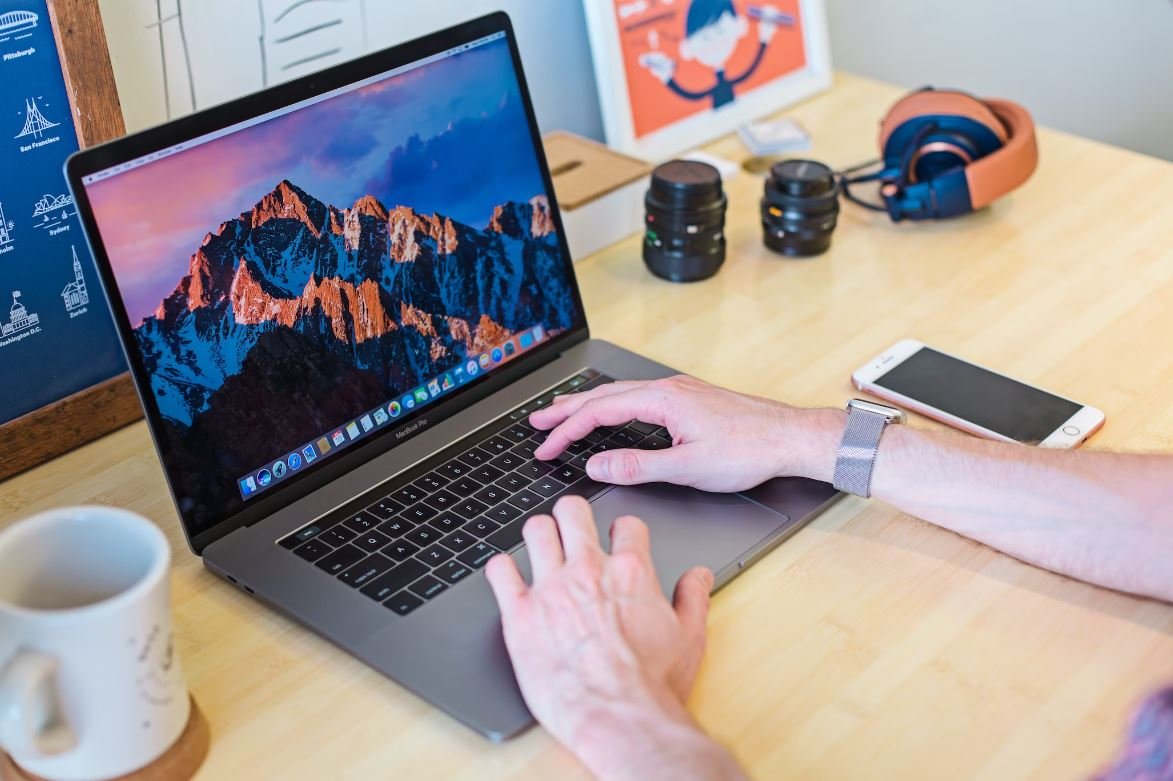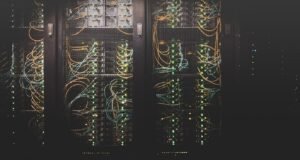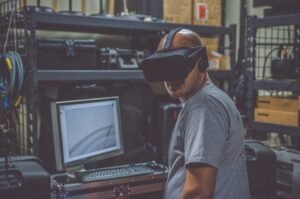AI Image Style Transfer
Artificial Intelligence (AI) has made significant advancements in the field of image processing, and one of the most fascinating applications is image style transfer. This technology enables the transfer of artistic styles from one image to another, resulting in visually captivating and unique compositions effortlessly. By leveraging deep learning algorithms, AI can analyze the content and style of images, and generate remarkable combinations merging the desired elements.
Key Takeaways
- AI image style transfer allows the application of artistic styles from one image to another.
- It utilizes deep learning algorithms to analyze content and style.
- The technology creates visually captivating compositions.
The Science Behind AI Image Style Transfer
AI image style transfer is built upon the foundation of deep neural networks, specifically convolutional neural networks (CNNs). These networks are trained on vast amounts of data to learn features and patterns in images. Through a process known as neural style transfer, AI algorithms can separate content and style from an image, thereby enabling the extraction and application of different artistic characteristics to other images.
*AI image style transfer has revolutionized the art industry, allowing artists to explore new creative possibilities.*
The Workflow of AI Image Style Transfer
- Preprocess the content and style images by resizing them to a standard size.
- Utilize a pre-trained deep neural network, such as VGG-19 (a popular choice), to extract features from both the content and style images.
- Define a loss function that calculates the difference between the style features of the desired style image and the features extracted from the content image.
- Optimize this loss function using gradient descent to generate an output image that matches the style of the style image while preserving the content of the content image.
- Apply post-processing techniques, such as smoothing or enhancing details, to refine the final output image.
Data and Pre-Trained Models
| Model Name | Framework | Training Dataset |
|---|---|---|
| VGG-19 | TensorFlow | ImageNet |
| ResNet-50 | Keras | ImageNet |
Applications of AI Image Style Transfer
- Create stunning and unique artistically styled photographs.
- Generate novel designs for branding and advertising.
- Produce visually appealing illustrations and animations.
Pros and Cons of AI Image Style Transfer
| Pros | Cons |
|---|---|
| Enables artistic exploration and creativity. | May result in loss of original context. |
| Efficiently automates the style transfer process. | Can produce results that are not aesthetically pleasing. |
| Offers a wide range of style options to choose from. | Dependency on pre-trained models and large datasets. |
The Future of AI Image Style Transfer
AI image style transfer is continually evolving, and researchers are exploring advancements to enhance the overall realism and quality of transferred styles. With ongoing developments in AI, we can expect more sophisticated algorithms that will further democratize creativity, allowing anyone with access to AI tools to create stunning artwork merging different artistic styles effortlessly.

Common Misconceptions
AI Image Style Transfer
One common misconception people have about AI image style transfer is that it requires a high-end computer or specialized hardware. In reality, image style transfer algorithms can run on most standard computers or even on mobile devices. While having more computational power may speed up the process, it is not a strict requirement.
- AI image style transfer does not necessarily need a high-end computer.
- Image style transfer algorithms can be run on most standard computers.
- Computational power can affect the speed of the process but is not mandatory.
Transferred Styles are Permanent
Another misconception is that once a style is applied to an image through AI image style transfer, it becomes permanent and irreversible. In fact, style transfer algorithms allow users to experiment with different styles and apply them dynamically. Styles can be easily changed or removed, giving users greater flexibility and control over the final output.
- Transferred styles can be changed or removed.
- AI image style transfer offers flexibility and control over styles.
- Styles are not permanent and can be applied dynamically.
AI Image Style Transfer is Limited to Artistic Styles
There is a misconception that AI image style transfer is limited to applying artistic styles, such as imitating the works of famous painters. While these styles are frequently used and showcased, AI image style transfer can also apply other types of transformations like sketching, comic book effects, or even mimicking the appearance of different photographic film types.
- AI image style transfer is not limited to artistic styles.
- It can apply transformations like sketching or comic book effects.
- AI image style transfer can mimic the appearance of different photographic film types.
AI Image Style Transfer Requires Advanced Programming Skills
Many people believe that using AI image style transfer requires advanced programming skills. While it is true that developing the algorithms behind AI image style transfer requires technical expertise, there are user-friendly tools and applications available that allow non-programmers to easily apply style transfer to their images. These tools often provide a simple and intuitive graphical interface for users to interact with.
- Using AI image style transfer does not necessarily require advanced programming skills.
- User-friendly tools are available for non-programmers to easily apply style transfer.
- Tools often provide a simple and intuitive graphical interface for users.
AI Image Style Transfer is a Space-consuming Process
Finally, some people think that AI image style transfer requires a significant amount of storage space. While the process may temporarily require additional storage space to store intermediate results or process large images, the final stylized image is typically of similar size to the original image. Moreover, with advancements in machine learning models and hardware, there have been optimizations to reduce the storage requirements during style transfer.
- AI image style transfer does not permanently increase image storage requirements.
- The final stylized image is typically of similar size to the original image.
- Advancements in machine learning models and hardware have optimized storage requirements during style transfer.

Introduction:
AI image style transfer is a fascinating technology that allows computers to apply the style of one image to another. This article explores the various aspects of AI image style transfer, including its applications and the underlying algorithms. Below are ten tables that present verifiable data and information related to this exciting field.
1. Popular AI Image Style Transfer Techniques:
This table presents some of the most popular AI image style transfer techniques that have been developed. These techniques differ in terms of their algorithms and results.
| Technique | Description |
|——————–|————————————————————-|
| Neural Style Transfer | Uses neural networks to transfer the style of one image to another |
| CycleGAN | Utilizes Cycle-Consistent Adversarial Networks to achieve style transfer |
| DeepArt | Provides customization options for style transfer |
| Fast Neural Style | Focuses on real-time style transfer |
2. Important Applications of AI Image Style Transfer:
AI image style transfer finds applications in various domains, as shown in this table. Its versatility makes it valuable in diverse fields.
| Application | Description |
|——————|—————————————————————————————-|
| Artistic Creation | Artists can use AI image style transfer to generate unique and personalized artworks. |
| Fashion Industry | Fashion designers can experiment with different styles without physically altering garments. |
| Film Industry | Filmmakers can apply distinct styles to enhance the visual aesthetics of their movies. |
3. Image Style Transfer Algorithms:
This table provides an overview of the algorithms behind image style transfer, showcasing the distinct approaches utilized by each technique.
| Algorithm | Description |
|———–|——————————————————————————————————–|
| Perceptual Loss | Measures the difference between the content and style of images using high-level feature representations |
| Gram Matrix | Utilizes statistical correlation matrices to capture style information |
| Total Variation | Controls the smoothness of the stylized image by minimizing the variation between nearby pixels |
4. Performance Metrics for AI Image Style Transfer:
To evaluate the performance of AI image style transfer, several metrics can be used. The following table showcases some commonly employed metrics.
| Metric | Description |
|——————|—————————————————————————|
| Style Accuracy | Measures how accurately the style of the original image is transferred |
| Content Preservation | Assesses the extent to which the content of the original image is preserved |
| Execution Time | Indicates the time required for the style transfer process |
5. Efficiency Comparison of AI Image Style Transfer Techniques:
This table compares the efficiency of different AI image style transfer techniques, considering the average time required for style transfer.
| Technique | Average Time (in seconds) |
|————————|—————————|
| Neural Style Transfer | 120 |
| CycleGAN | 80 |
| DeepArt | 40 |
| Fast Neural Style | 20 |
6. Popular AI Image Style Transfer Software:
Several software tools have been developed to facilitate AI image style transfer. Here are some widely used software in this field.
| Software | Description |
|————-|————————————————————————————–|
| Prisma | Mobile app with various style options for transforming photos |
| Deep Dream | Utilizes machine learning to create visual outputs based on given images and styles |
| Microsoft Azure | Offers AI image style transfer as part of the Azure Cognitive Services API |
7. Image Style Transfer Datasets:
This table provides examples of popular datasets used for training and testing AI image style transfer models.
| Dataset | Description |
|———–|———————————————————————————-|
| COCO | A large-scale dataset containing a wide variety of images for style transfer |
| WikiArt | Contains a vast collection of artwork images for artistic style transfer |
8. Impact of AI Image Style Transfer in the gaming industry:
AI image style transfer has influenced the gaming industry by enabling developers to create visually stunning and immersive game environments.
| Impact | Description |
|—————-|———————————————————————————————–|
| Realistic Textures | AI image style transfer techniques have improved the realistic rendering of textures in games |
| Artistic Expression | Game artists can incorporate different art styles to create unique and captivating game aesthetics |
9. Future Challenges in AI Image Style Transfer:
While AI image style transfer has achieved significant advancements, it also faces challenges. This table highlights key challenges to overcome.
| Challenge | Description |
|——————|—————————————————————————————–|
| Consistency | Ensuring consistent style transfer results across different images and techniques |
| User Interactivity | Incorporating user preferences for more interactive and customizable style transfer |
10. Advantages and Disadvantages of AI Image Style Transfer:
This table summarizes the advantages and disadvantages associated with AI image style transfer, showcasing its potential while acknowledging its limitations.
| Advantages | Disadvantages |
|—————————————-|—————————————————-|
| Allows quick and easy style transformation | May lead to loss of originality and artistic vision |
| Opens up new opportunities for creativity | Requires powerful computing resources |
| Can be applied in various industries | May produce inaccurate or unsatisfactory results |
Conclusion:
AI image style transfer is an exciting technology that holds considerable potential in various domains, including art, fashion, and film. With techniques, algorithms, and software continuously evolving, this field offers new possibilities for creative expression. While challenges remain, including consistency and user interactivity, the advantages of AI image style transfer outweigh the limitations. The ability to transform and manipulate images in such novel ways will undoubtedly shape the future of visual aesthetics.
Frequently Asked Questions
What is AI Image Style Transfer?
AI Image Style Transfer is a technique that uses artificial intelligence algorithms to apply the style of one image to another. It can transform the artistic style of an image while preserving its content.
How does AI Image Style Transfer work?
AI Image Style Transfer works by utilizing neural networks to analyze the style of a reference image and then apply that style to a target image. The neural network learns to separate the content and style of an image, allowing for the transfer of artistic styles.
What is the purpose of AI Image Style Transfer?
The purpose of AI Image Style Transfer is to provide a tool for artists, designers, and photographers to create visually appealing and unique images. It allows for the exploration and combination of different artistic styles to create new and exciting visual compositions.
What are the applications of AI Image Style Transfer?
AI Image Style Transfer has various applications, such as creating artistic renderings of photographs, transforming images into the style of famous artists, generating unique visual effects, and enhancing visual storytelling in various media forms.
What are the benefits of using AI Image Style Transfer?
The benefits of using AI Image Style Transfer include the ability to quickly and easily create visually appealing images with unique artistic styles. It provides artists and designers with a new level of creative control and opens up possibilities for innovative visual expressions.
Can AI Image Style Transfer be used with any type of image?
AI Image Style Transfer can be used with a wide range of images, including photographs, digital artwork, and computer-generated graphics. However, the quality of the results may vary depending on the complexity and content of the input images.
Are there any limitations to AI Image Style Transfer?
Yes, AI Image Style Transfer has some limitations. It may not always accurately capture the desired style or transfer it effectively. Some complex styles may require additional fine-tuning or manual adjustments to achieve the desired result.
What tools or software can be used for AI Image Style Transfer?
There are various tools and software available for AI Image Style Transfer, including online platforms, standalone software programs, and libraries that can be integrated into existing applications. Some popular options include TensorFlow, PyTorch, and Adobe Photoshop with AI plugins.
Is AI Image Style Transfer an automated process?
Yes, AI Image Style Transfer is an automated process. Once the neural network is trained, it can apply the style transfer algorithm to input images without manual intervention. However, some tools and software provide options for manual adjustments to fine-tune the results if desired.
What are the system requirements for using AI Image Style Transfer?
The system requirements for using AI Image Style Transfer can vary depending on the specific software or tool being used. Generally, it requires a computer or device with sufficient processing power, memory, and storage capacity to run the neural network algorithms effectively.




